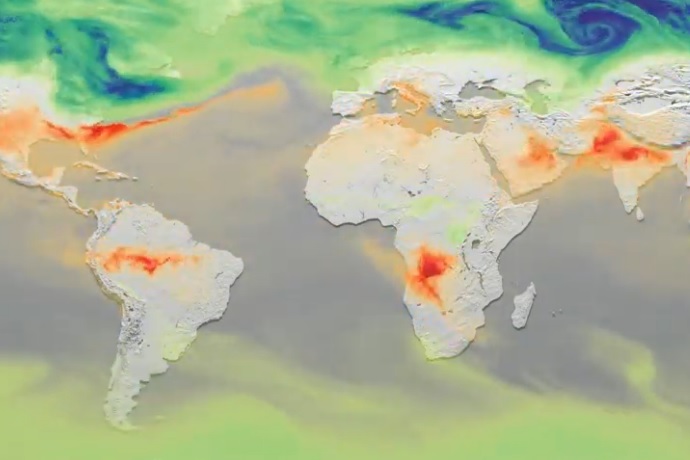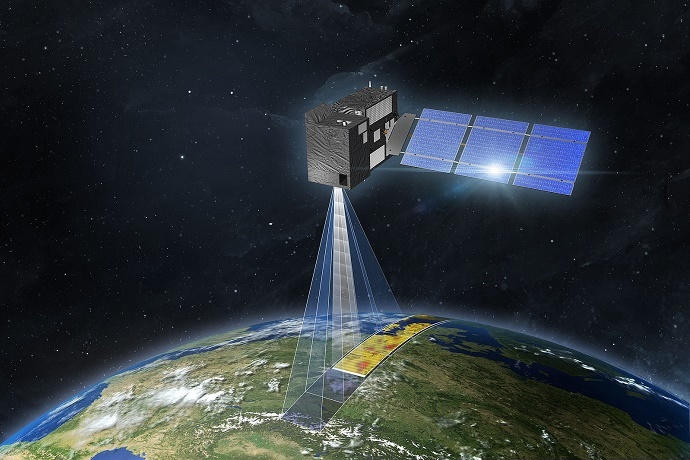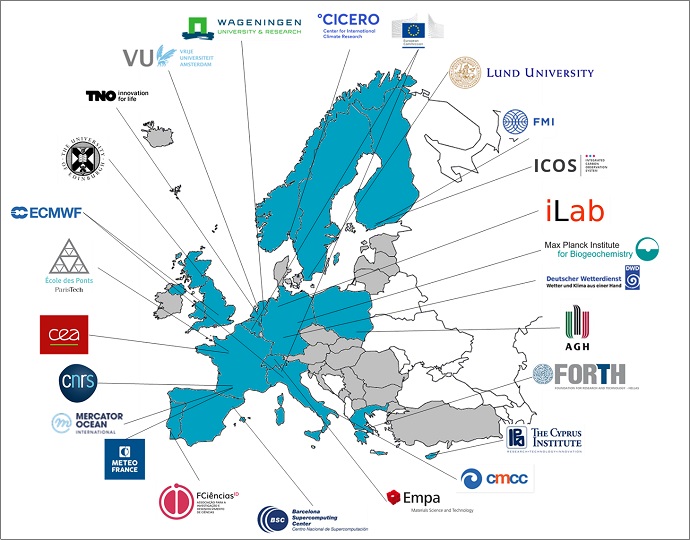

A European programme to build a monitoring and verification support capability for global emissions of carbon dioxide (CO2) related to human activities entered a new phase in January 2021 to deliver a prototype system by the end of 2023.
The EU-funded project, called Prototype system for a Copernicus CO2 service (CoCO2), brings together 25 partners from 14 European countries and is coordinated by ECMWF. It is the successor to the three-year EU-funded CO2 Human Emissions (CHE) project.
The future European anthropogenic CO2 emission monitoring and verification support capability will support action on climate change in line with the Paris Agreement. It is expected to be part of the EU-funded Copernicus Atmosphere Monitoring Service (CAMS) operated by ECMWF.
The CHE project has produced a year-long simulation of CO2 variability.
Main tasks
CoCO2 is meant to deliver prototype anthropogenic CO2 emission estimation systems at global, regional and local scales.
It will prepare the ground for the use of new and highly accurate CO2 satellite monitoring capabilities, combined with means to measure NO2 as a proxy for the plumes of freshly emitted CO2 from power plants and cities.

The CO2 monitoring capability will be supported by up to three satellites (Image copyright: OHB).
The results of measurements will need to be linked with detailed computer models of the Earth system that represent the sources, sinks and transport of CO2 in the atmosphere.
Ultimately CoCO2 should make recommendations for the implementation of an observation-based anthropogenic CO2 emission Monitoring and Verification Support capacity (CO2MVS) as part of the EU’s Copernicus programme.
The users of CO2MVS will be governments and policy makers, industry, the scientific community, and the public.
A first CoCO2 meeting on 27 and 28 January brought together around 100 participants from across Europe. “We had good discussions on detailed plans for the three years ahead,” said Richard Engelen, the Project Coordinator of CoCO2 and Deputy Director of CAMS.

Richard Engelen addressed other members of the CoCO2 project during a first meeting in January 2021.
Building on the CHE project
CHE already made some progress in devising a method to optimally combine a range of Earth observation data with model information in a process called data assimilation. The method is known from weather forecasting as a reanalysis.
The results inevitably come with uncertainties. To investigate these, the prototype system will produce various sensitivity studies at different scales based on slightly different assumptions.
“One of the biggest challenges is to adapt the 4D-Var data assimilation system to enable the use of observations over an extended period of time, connecting CO2 atmospheric concentrations to their surface sources and sinks,” says ECMWF’s Gianpaolo Balsamo, who coordinated the CHE project.
“The current 12-hour data assimilation window should ideally be extended to several days. This is something that hasn’t been done before at the level of granularity needed to support each country.”
Professor Stephen Briggs, CHE and CoCO2 Project reviewer, said: "The CHE research was world-class, and the consortium managed to make sizeable advances for the CO2 emission Monitoring and Verification Support capacity. It therefore forms a fantastic starting point for the CoCO2 project."

The CoCO2 partner countries (in blue) and additional ECMWF Member and Co-operating States in Europe (in grey).
